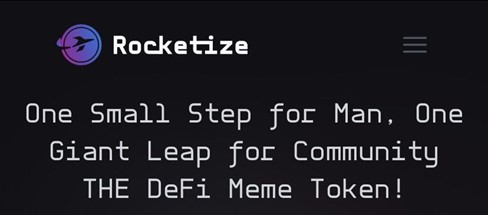[ad_1]
The human body is smart, says Dr Christopher Mambula, medical manager for east Africa at Médecins Sans Frontières. He’s talking about the physical effects of food deprivation, a subject that gets little attention even within the medical world, and yet, as aid agencies continue to report, affects hundreds of millions of people around the world. “If it doesn’t have enough food to convert into energy,” he continues, “it will burn through its own fat reserves, breaking down fat cells into fatty acids to be used for energy or converted into glucose by the liver.”
How long it takes for the body to use up all its fat deposits depends on multiple factors: the amount and nutritional value of food being eaten; the individual’s metabolism; their activity levels; their body mass index; and their age and overall health.
“It could take a month, six months, a year. People don’t go from some food to zero food. They start to reduce the number of meals. In places like the Horn of Africa people may go entire days without a meal,” Mambula says.
After a sustained period of severe lack of food, the only fat left in the body will be between muscles, in joints and organ cells. “In women, in the worst-case scenario, you will notice they have no more breast tissue because every single ounce of fat is converted in places that are usually spared,” Mambula says.
While this is happening, low glucose levels in the blood make the person feel weak and dizzy. It is at this point – feeling woozy, irritable and struggling to concentrate – that many people are forced to make difficult decisions. If they cannot find water for their cattle, do they sell it at a vastly lower price than its original worth? Do they take their daughters out of school? Do they split up the family?
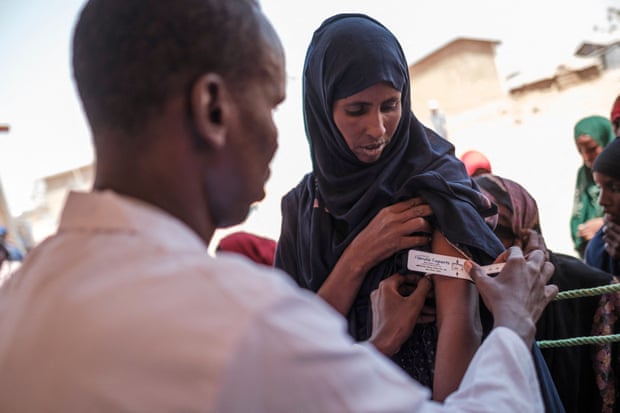
Using up the body’s fat reserves is not dangerous in itself, but if food deprivation continues once the fat is gone, the body will start to break down muscle cells to access the fatty acids and proteins contained within them. The result of this is muscle atrophy – the medical term for loss of muscle mass – as the muscle cells lose their structural integrity. Within a few weeks, there’s no longer enough muscle to support the body, even in a seated position. Lying down is the only option.
As muscle cells break down they release chemicals, including potassium, chloride and sodium, and cellular debris into the bloodstream. These chemicals, combined with a lack of vital minerals and vitamins from malnutrition, cause an imbalance that affects multiple parts of the body, from individual cells to organ function. Lack of zinc can cause diarrhoea and cracked skin, and reduces the ability to fight infections. Salt imbalance may be associated with oedema or swelling, which can also lead to kwashiorkor, or severe malnutrition in young children, causing swollen bellies and faces.
Dr Neal Russell, a paediatric adviser with MSF, says: “There is a path towards death that people travel. Until they are at a late stage, deficiencies can be corrected by giving food, but beyond a certain point the body cannot regulate itself, even with treatment.”
The last thing to stop is the heart – in some cases, because the weakened heart is simply not powerful enough to pump blood around the body; in others, chemical imbalance in the bloodstream stops the heart. A person may not be conscious at this point: unable to function without energy, the brain begins to shut down. In the last hours before falling into a coma, a person may lose their vision as the brain zones in and out.
Though malnutrition affects millions of people, especially children, there is still much that is unknown about it. “Much of what we thought we knew 20 years ago has since been questioned,” Russell says.
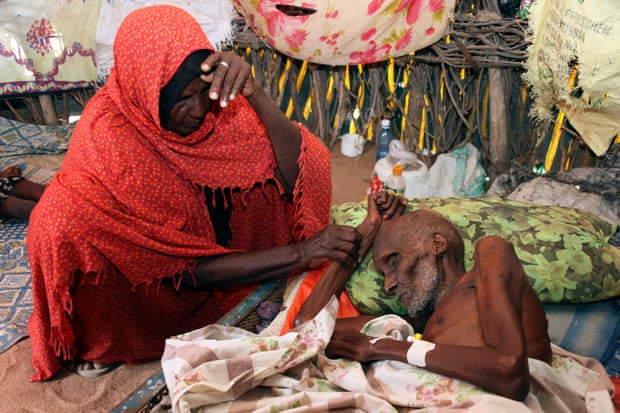
Lack of money means there is still a dearth of research into both the short- and long-term impacts of malnutrition. “This is not a subject that people put a lot of medical research into,” he adds. “The money is in obesity and overnutrition, and research follows money. We got Covid vaccines in one year.”
What is known is that most people suffering from malnutrition die from disease or infection rather than starvation itself. Lack of food affects the immune system, shrinking the lymph nodes so they produce fewer white blood cells. The existing white blood cells don’t have sufficient energy to do their job in fighting off bacteria or healing a wound. A person is much more vulnerable to diseases such as malaria or conditions such as pneumonia and sepsis.
A dystopian crisis
“Zero hunger” by 2030 was one of 17 sustainable development goals set out by the UN in 2015. Today, the UN predicts that the number of people affected by hunger will surpass 840 million by 2030. Far from the situation improving, millions are trapped in the worst hunger crisis in living memory. The World Food Programme says 50 million people in 45 countries are teetering on the edge of famine.
“A few years ago, things were gradually getting better and now it is going in the other direction, rapidly. It’s extremely worrying when you think about the impact on real people. What shocks me is the lack of outrage – it’s horrifying,” Russell says.
In September, the UN warned that famine was likely to be declared in Somalia later this year.
A letter to UN member states as they gather for the 2022 UN general assembly this week was the latest call for immediate funding to prevent suffering now and in the future. “In a world of plenty, leaving people to starve is a policy choice,” reads the letter, which is signed by 238 NGOs. “The lack of political will and institutional failure to act quickly before the worst case hits means people are being left to lurch from crisis to crisis. People are not starving; they are being starved.”
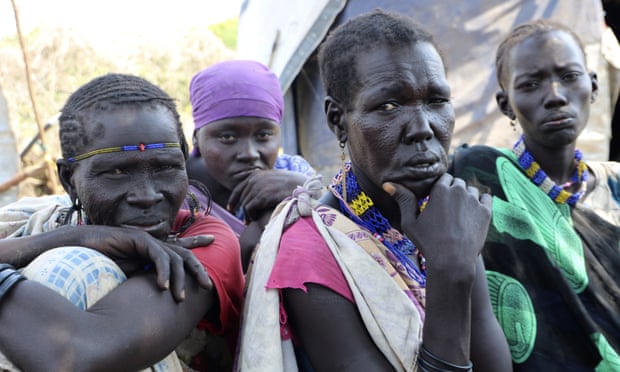
These are needless deaths that will be largely ignored by a world distracted by extreme weather, the cost of living crisis and political upheavals. Aid agencies have the knowledge and ability to address food insecurity, but not the funding, says Alexandra Rutishauser-Perera, head of nutrition at Action Against Hunger UK. “We know how to [address food insecurity] better and better, but we are not given the means to implement all we know. Aid is not arriving fast enough and is not large enough to improve the situation. For the moment, it’s about trying to reduce the number of lives being lost.”
In addition to lack of funding, costs are rising. Over the past year, the cost of ready-to-use therapeutic food (RUTF) that Action Against Hunger gives to malnourished children has increased by 23%, including a 9% increase since the war in Ukraine began. According to Unicef, global prices for RUTF are expected to increase by an additional 16% over the next six months, as the price of transportation and ingredients continues to rise.
The war in Ukraine has pushed up the cost of food, energy and fertiliser around the world, and caused supply chains to stall, adding to the existing strain from conflict, extreme weather and economic shocks.
Russell describes watching this crisis unfold before his eyes as “dystopian”. He feels a responsibility to communicate what hunger does to people, but struggles to find the right words. “I can go into my safe zone [using medical terminology], but I have never found the language to describe the horror and injustice of seeing a child dying from malnutrition.”
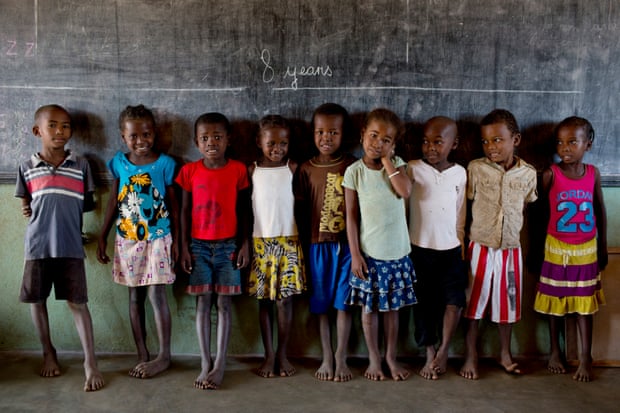
In 2021, MSF admitted 82,000 children to intensive therapeutic feeding centres, a 27% rise on 2020. A further 200,000 children were treated for malnutrition outside hospital. It expects numbers to grow again in 2022.
“One of the most haunting things about a children’s malnutrition centre is the deadly quiet of some children,” Russell says. “Their childhood has evaporated away. Young children regress, and stop walking or become incontinent – and they stop doing normal things like playing.”
Globally, malnutrition underlies almost half of child deaths in under-fives. The majority will die of infection because their immune systems are battered by lack of nutrients. “Your general defences against infection are reduced, your skin becomes thinner, your gut wall is thinner, the defences in your respiratory tract are weaker [and] less likely to cough things up,” Russell says.
Measles, malaria, pneumonia and diarrhoea are all common killers among children suffering from malnourishment; in many cases these children are moderately, as opposed to severely, malnourished. “The malnutrition can be just enough to tip the balance in children, causing them to contract an infection that will kill them.”
For every 10 children admitted to an intensive therapeutic feeding centre, one will probably die. Research published in the Lancet in May 2022 suggests that for every one that dies in hospital another will die after they are discharged.
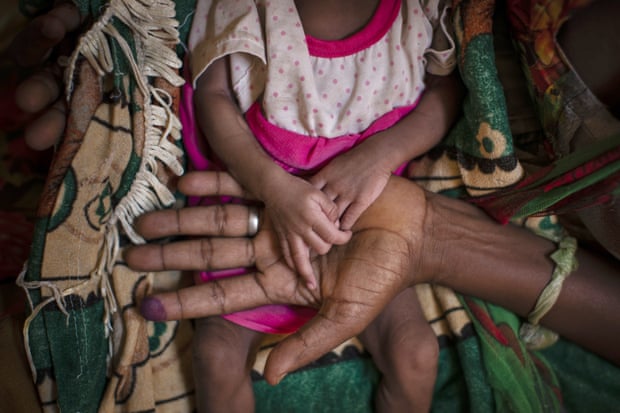
The first 1,000 days of life are crucial for nutrition. Children who survive can suffer long-lasting effects. Impaired cognitive and physical and behavioural development can affect their education. The condition is also intergenerational – an adolescent girl or young woman who is undernourished may give birth to an undernourished baby.
The hidden mental health cost
For every child too weak to laugh or play, there is a shellshocked mother and father watching on helplessly. A study published in the National Library of Medicine found the prevalence of moderate to severe depression among mothers of malnourished children was significantly higher (64.1%) compared with mothers of normal weight children (5.1%).
But there is little funding to address mental health in areas where hunger kills and tears families apart. “I’ve seen what it does to a family but we are not given enough money for it. The impact of providing water, food, medicine can be measured but it’s really difficult to account for mental health provision to a donor, so it is always the first thing to be cut [if there is not enough funding],” says Rutishauser-Perera.
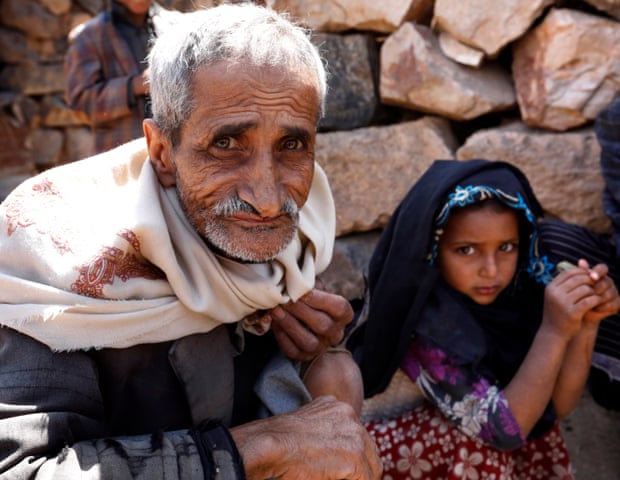
“When you don’t have the money to have psychologists onboard, agencies don’t have the means to identify and measure the extent of the problem, and offer appropriate support,” she adds.
In addition to the stress of not being able to provide, the breakdown of relationships between families also depletes a person’s mental reserves. As part of its work, Action Against Hunger helps mothers to bond with their children who survive illness, teaching them to play with children who did not have the energy to interact while they were ill.
“Hunger takes something away from you,” Russell says. “You can see how that breaks down a society and leads to more insecurity, conflict and anger.”
Sign up for a different view with our Global Dispatch newsletter – a roundup of our top stories from around the world, recommended reads, and thoughts from our team on key development and human rights issues, delivered to your inbox every two weeks:
Sign up for Global Dispatch – please check your spam folder for the confirmation email
[ad_2]
Source link



